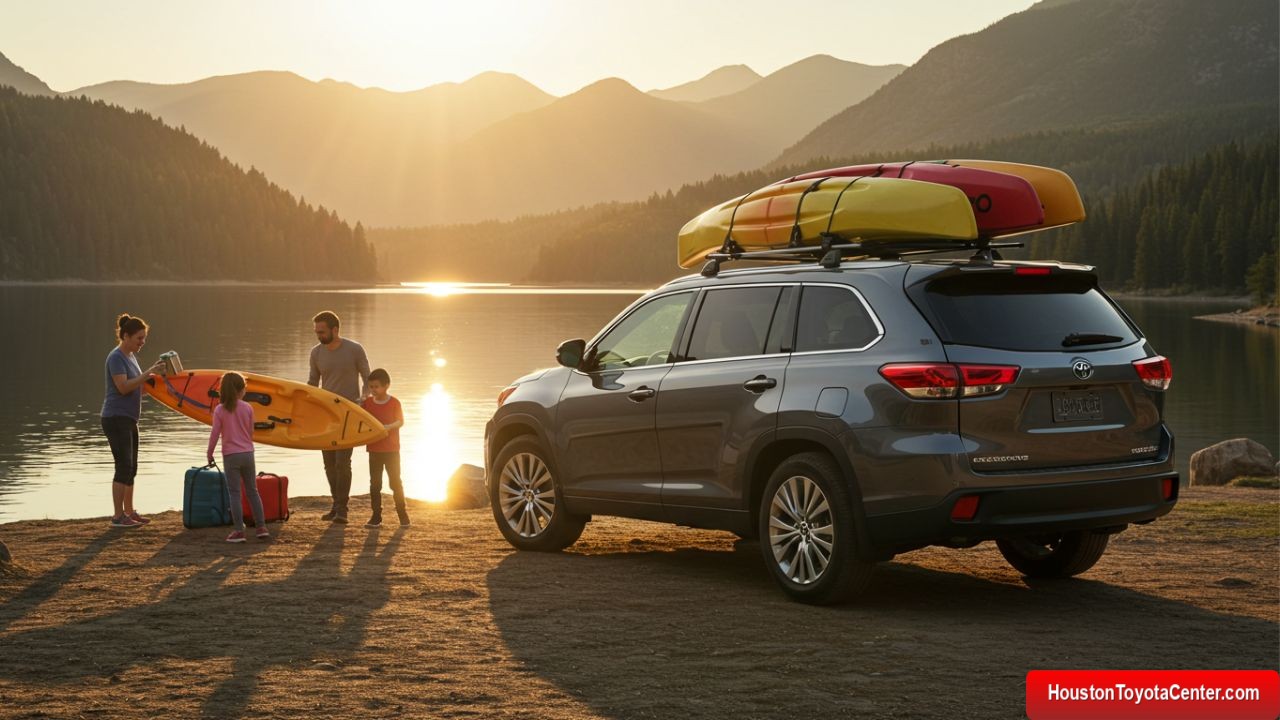The Toyota Highlander has long been a favorite among families and outdoor enthusiasts, blending rugged capability with modern comfort. At the heart of its versatility lies its roof rack system , a feature that transforms this midsize SUV into a powerhouse for hauling kayaks, camping gear, bikes, and more. Whether you’re planning a weekend lake trip or a cross-country road adventure, the Highlander’s roof rack is engineered to simplify your load. In this guide, we’ll dive deep into its design, capacity, and best practices for maximizing its potential.
1. Roof Rack Specifications: Understanding the Basics
Before loading up, it’s crucial to know your Highlander’s roof rack limits and features. Below is a breakdown of key specifications:
| Feature | Details |
|---|---|
| Maximum Load Capacity | 100–150 lbs (varies by model year; check owner’s manual) |
| Crossbar Material | Aluminum alloy (lightweight, corrosion-resistant) |
| Aerodynamic Design | Sleek, integrated crossbars reduce wind noise and drag |
| Compatibility | Universal mounts for aftermarket accessories (Thule, Yakima, etc.) |
| Roof Rail Type | Flush-mounted rails with adjustable crossbars |
Key Takeaway: Always verify your Highlander’s specific capacity, as older models (pre-2020) may have lower limits.
2. Hauling Kayaks: A Step-by-Step Guide
Kayaks are bulky and sensitive to imbalance. Here’s how to secure them safely:
FREE: Quickly identify and understand problems with your vehicle 🚘
CLICK HEREStep 1: Choose the Right Kayak Rack
- J-Style Racks : Ideal for solo kayakers; holds one kayak vertically.
- Stacker Racks : Perfect for multiple kayaks (up to 4, depending on weight).
- Saddle Racks : Cradles kayaks horizontally for stability.
Comparison Table:
| Rack Type | Capacity | Pros | Cons |
|---|---|---|---|
| J-Style | 1–2 kayaks | Space-efficient | Less stable on rough roads |
| Stacker | 3–4 kayaks | Maximizes vertical space | Requires precise balancing |
| Saddle | 2–3 kayaks | Secure, low center of gravity | Takes up more roof space |
Step 2: Secure the Kayak
- Position the Kayak : Place it upside-down (hull up) to protect the cockpit.
- Use Padded Straps : Protect the hull and deck from scratches.
- Tie Down with Bow/Stern Lines : Anchor the kayak to the front and rear of the Highlander.
Pro Tip: Use a load assist strap to reduce strain while lifting heavy kayaks.
3. Beyond Kayaks: Hauling Gear with the Highlander
The roof rack isn’t just for water sports. Explore these add-ons:
Roof Boxes
- Capacity : 16–22 cubic feet (ideal for camping gear, luggage).
- Popular Models : Thule Motion XT, Yakima SkyBox.
Bike Racks
- Hanging Racks : Affordable, holds 2–4 bikes.
- Platform Racks : More secure, better for heavy e-bikes.
Cargo Carriers
- Mesh Bags : Lightweight, collapsible.
- Hard-Shell Cases : Waterproof, perfect for tools or electronics.
Weight Warning: Never exceed the roof rack’s total capacity. Distribute weight evenly to avoid sway.
4. Installation & Maintenance Tips
- Install Crossbars Correctly : Align them with your vehicle’s roof rails. Tighten bolts to the manufacturer’s torque specs.
- Seasonal Checks : Inspect for rust, loose bolts, or wear after long trips.
- Clean Regularly : Wipe down rails with a damp cloth to prevent debris buildup.
5. Safety First: Avoiding Common Mistakes
- Overloading : Exceeding weight limits strains the roof and compromises handling.
- Improper Strapping : Loose straps can lead to lost gear or damage.
- Ignoring Aerodynamics : Poorly secured items increase drag and fuel consumption.
Real-Life Example: “I once forgot to tighten a kayak strap on a highway drive. The kayak shifted, cracked my rear window, and nearly caused an accident. Lesson learned!” – Sarah, avid kayaker.
6. Competitor Comparison: Why the Highlander Stands Out
| Vehicle | Roof Rack Capacity | Aerodynamics | Aftermarket Support |
|---|---|---|---|
| Toyota Highlander | 150 lbs | Excellent | High (Thule/Yakima) |
| Honda Pilot | 160 lbs | Good | Moderate |
| Subaru Outback | 150 lbs | Fair | Limited |
Verdict: The Highlander strikes a balance between capacity, ease of use, and accessory compatibility.
7. Expert Tips for Long Trips
- Test Drive First : Take a short drive to ensure gear is secure.
- Pack Smart : Place heavier items closer to the roof to lower the center of gravity.
- Check Local Laws : Some states restrict vehicle height (typically 13’6”).
Conclusion: Adventure Awaits
The Toyota Highlander’s roof rack isn’t just a feature—it’s a gateway to exploration. With proper setup and care, it can handle everything from kayaks to camping gear, making it the ultimate companion for outdoor enthusiasts.


Leave a Reply